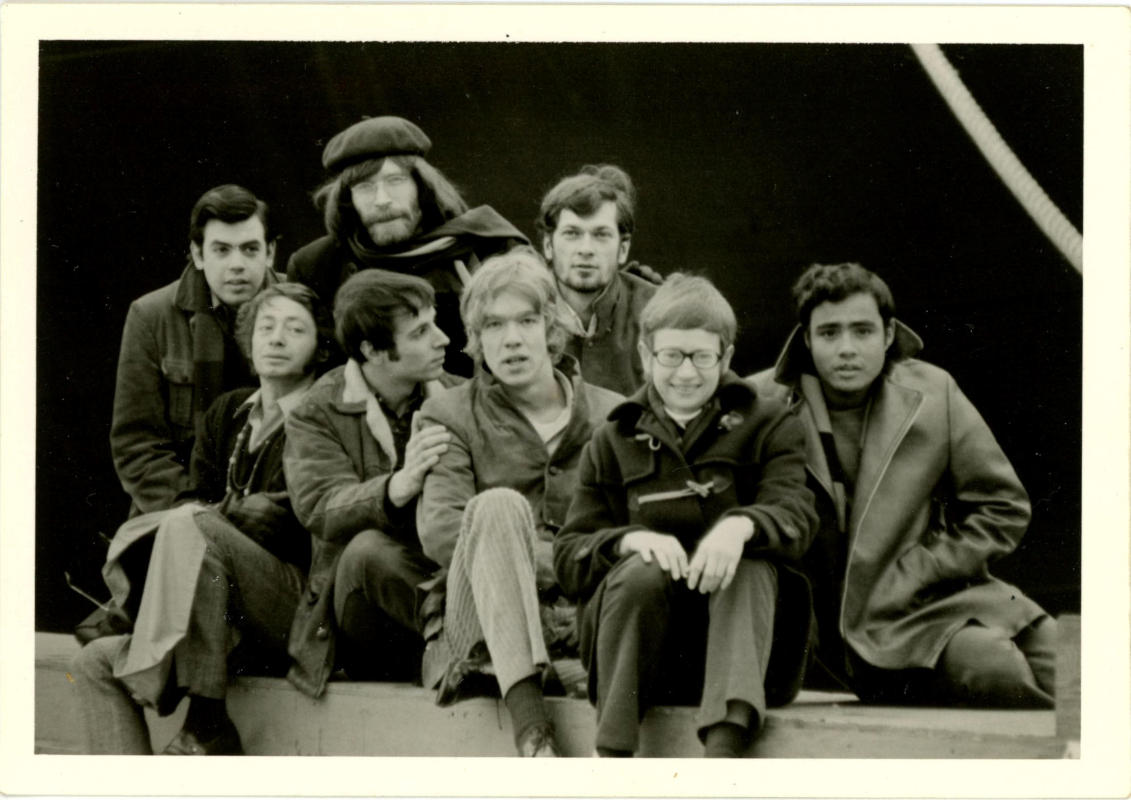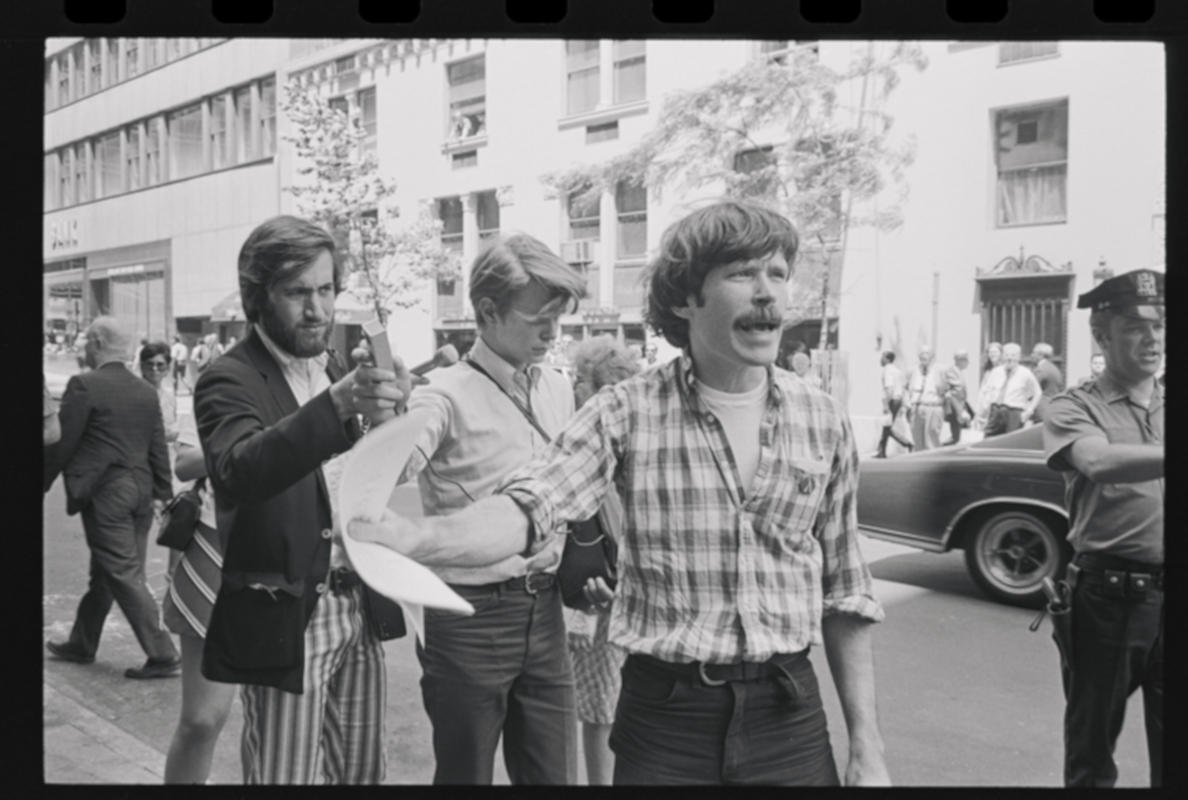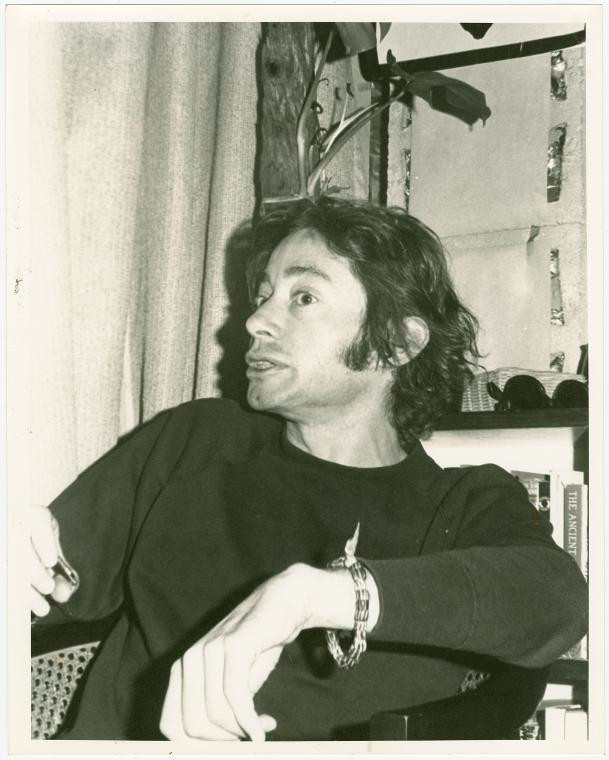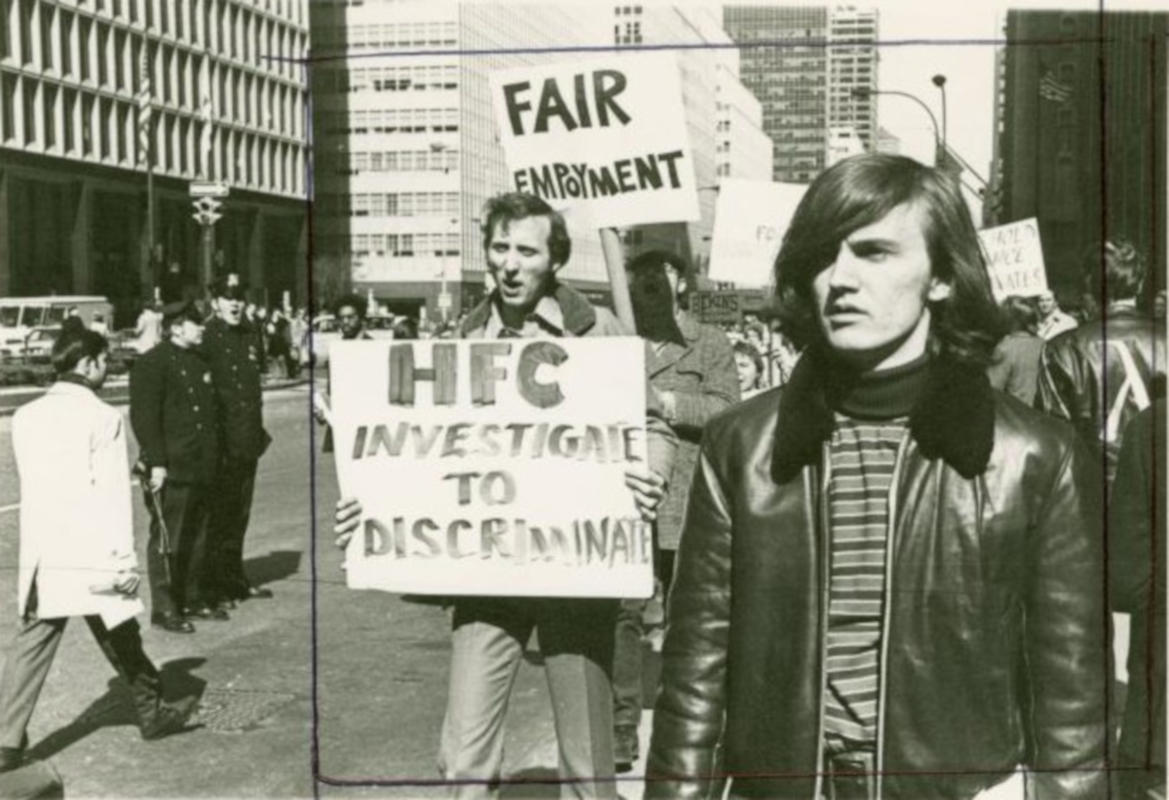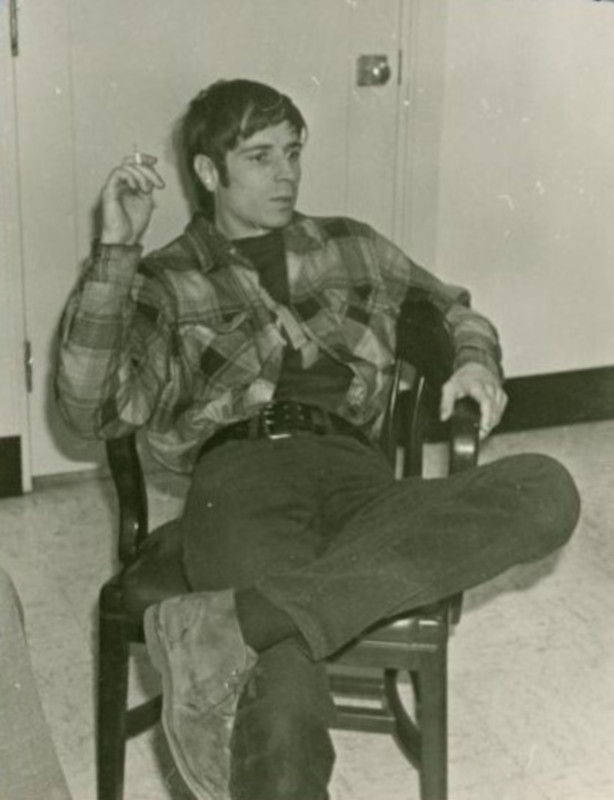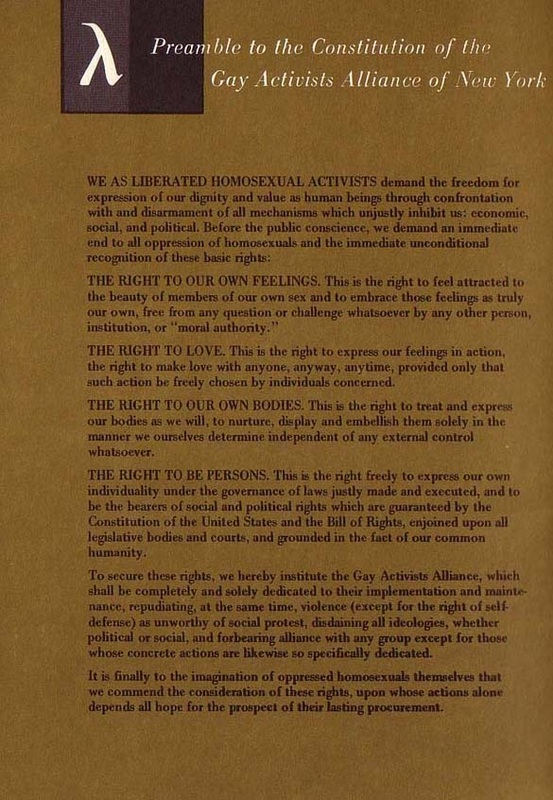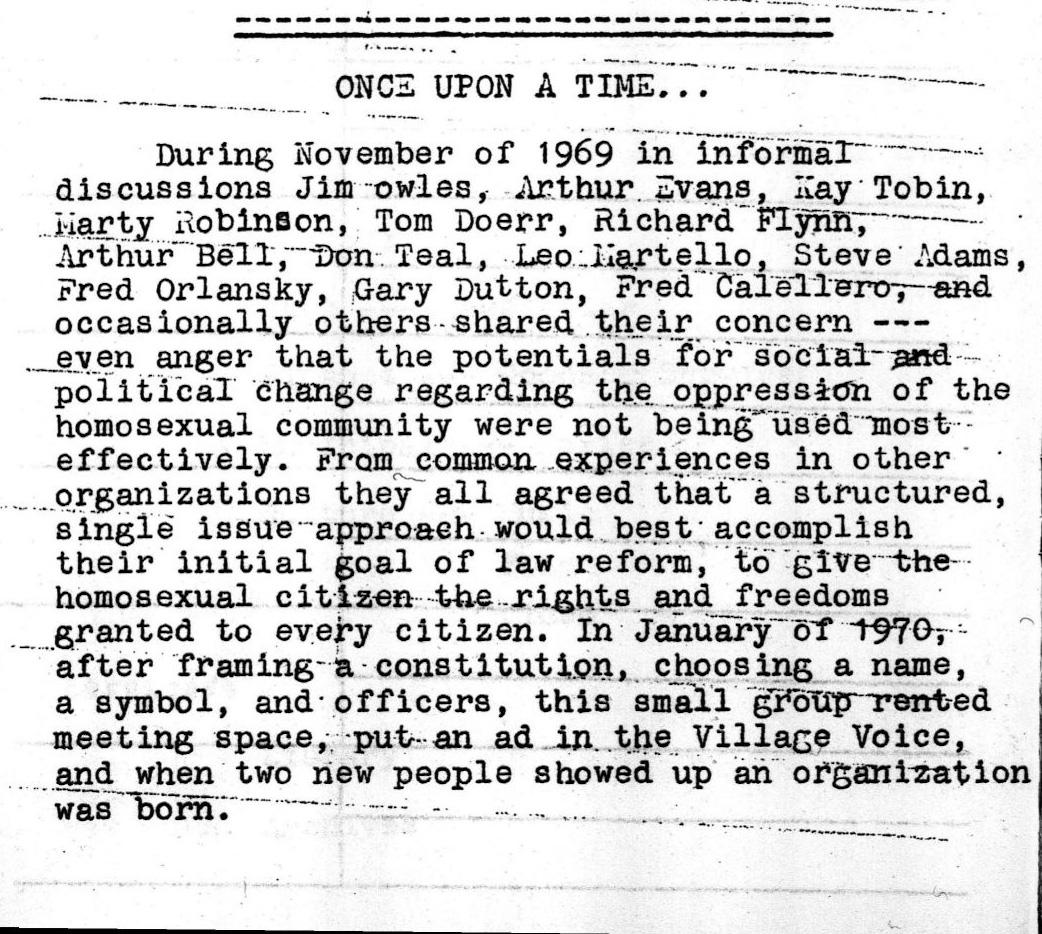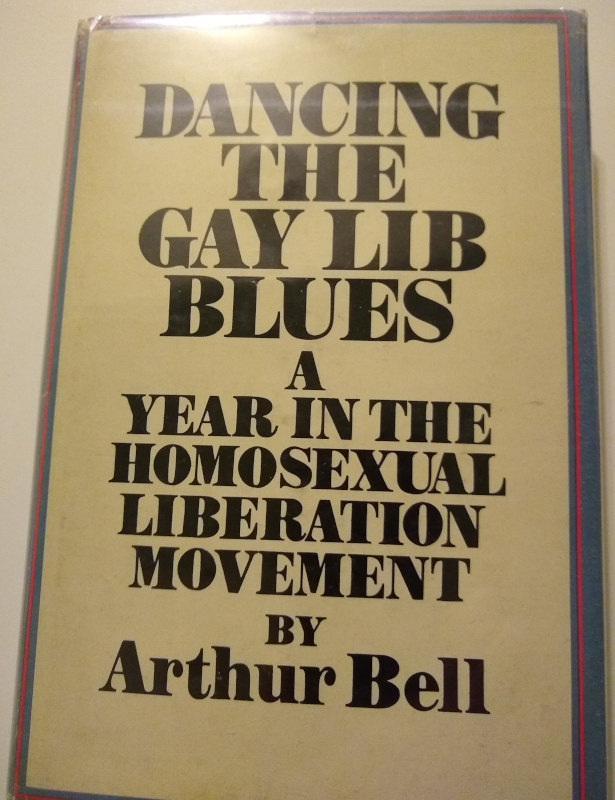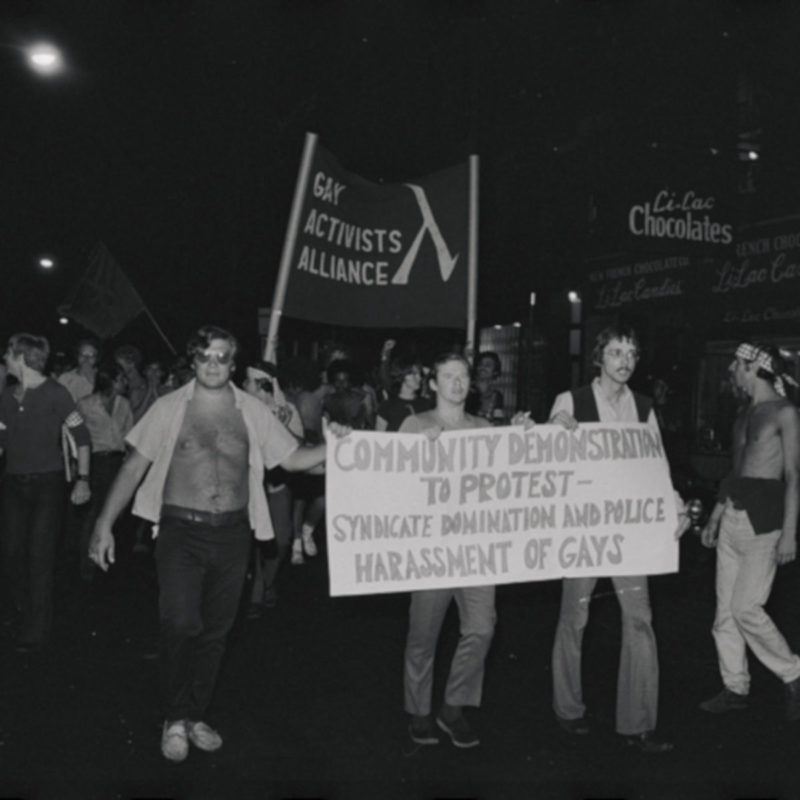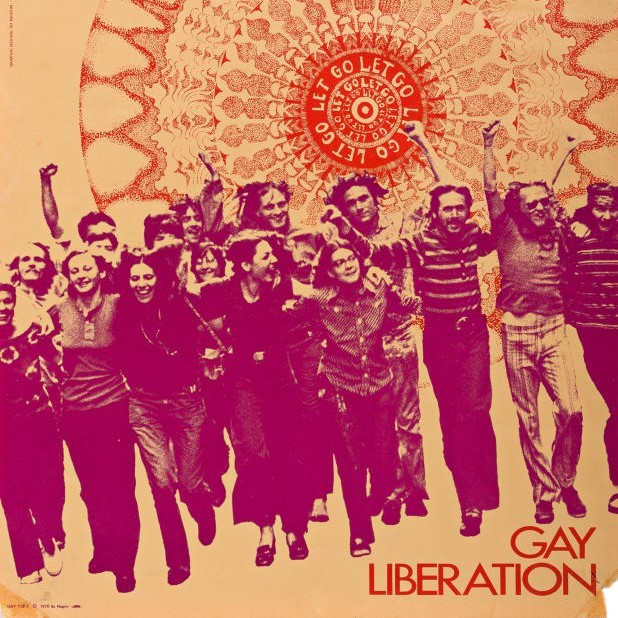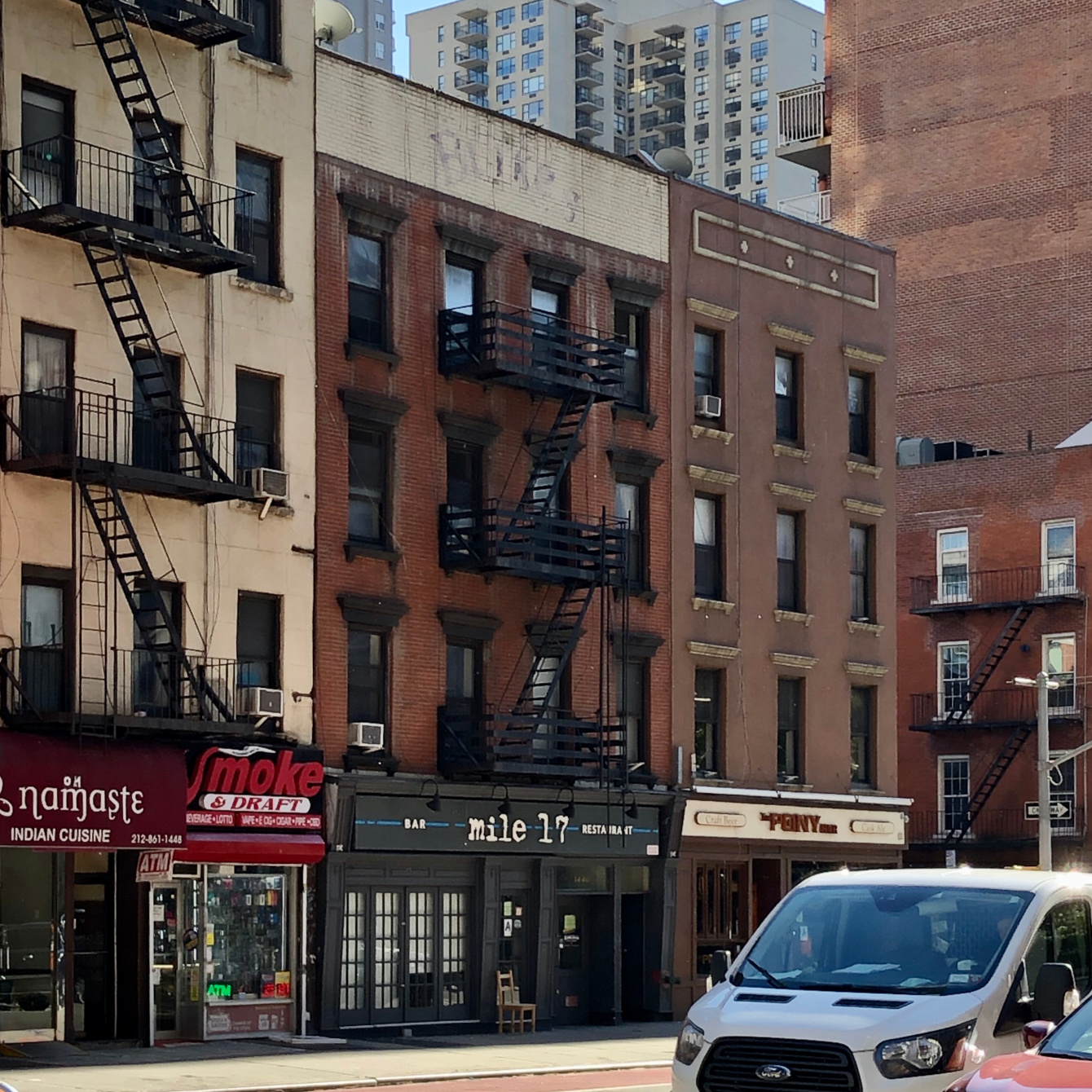
Founding of the Gay Activists Alliance at the Arthur Bell Residence
overview
The Gay Activists Alliance (GAA) was officially founded in December 1969, after a number of activists left the earlier Gay Liberation Front in November, in order to form an organization that concentrated solely on gay and lesbian issues.
GAA became the most influential American gay liberation activist organization in the early 1970s.
History
After the Stonewall Rebellion in June 1969, the first LGBT activist organization formed was the Gay Liberation Front (GLF), in July. GLF was a leftist group that attempted to ally itself with other progressive activists of the time, such as anti-Vietnam War protestors and the Black Panthers. Several GLF members, including Jim Owles, Marty Robinson, Arthur Evans, and Arthur Bell, became disaffected with GLF within a few months and decided to form a new gay rights group devoted exclusively to gay and lesbian issues. Among the reasons were their consensus that GLF was unfocused with too many issues and few accomplishments, that it had no consistent course of gay rights street activism, and had no democratically elected leaders.
Evans, Bell, and Owles met over Sunday brunch in early November 1969 to discuss forming a new group, and were joined the following evening by Robinson at Owles’ apartment (listed on a 1970 document as 328 East 61st Street). Three of the men (Evans was absent) were joined on November 24, 1969, by a larger group, which included, according to a 1971 flyer, Tom Doerr, Kay (Tobin) Lahusen, Fred Orlansky, Bernardo “Freddie” Cabellero, Richard Flynn, Donn Teal, Leo Martello, Steve Adams, and Robin Souza (“Gary Dutton”). According to Evans, “we met a few times to clarify our ideas,” with the meetings held in Owles’ apartment, according to Orlansky.
Other founders soon included Phil Raia, Peter Marleau, Frank Thompson, John Paul Hudson, and Ron Diamond. According to Raia, they also met at Thompson’s Cornelia Street Art Gallery. The group came up with the name Gay Activists Alliance (GAA). Evans gathered everyone’s suggestions and drafted a Preamble and Constitution for the new organization.
GAA was officially founded on December 21, 1969, by a group of 19 people in Arthur Bell’s apartment on the Upper East Side (Bell had been Evans’ boyfriend since 1964). At this meeting the group’s name and the Preamble and Constitution were adopted. The Preamble began with “We as liberated homosexual activists demand the freedom for expression of our dignity and value as human beings through confrontation with and disarmament of all mechanisms which unjustly inhibit us: economic, social, and political.” Owles was elected as president, and Robinson was elected delegate at large. The focus of GAA was to be exclusively “the liberation of gay people.” A radical, activist, non-violent gay rights organization, it was to operate democratically under Robert’s Rules of Order, and would not endorse political candidates.
Before the public conscience, we demand an immediate end to all oppression of homosexuals and the immediate unconditional recognition of these basic rights: the right to our own feelings .… the right to love .… the right to our own bodies .… [and] the right to be persons.
An advertisement was placed in the Village Voice for the first general public meeting at the Church of the Holy Apostles on January 8. Discussion topics included petitioning Greenwich Village councilmember Carol Greitzer to introduce a bill before the City Council to prohibit discrimination against LGBT people in employment. The church would be GAA’s meeting place until May 1971, when the organization secured its own headquarters in the Firehouse in SoHo. GAA became the most influential American gay liberation activist organization in the early 1970s. While the pickets and actions by earlier homophile groups in the 1960s, like the Mattachine Society’s Sip-In at Julius’, had been quite restrained (though radical for their time), in the post-Stonewall era, GAA and other groups such as GLF and Radicalesbians, were more confrontational. GAA remained, however, dedicated to non-violence.
Arthur Bell had been a director of publicity for children’s books at Viking Press, and later worked at Random House. After the formation of GAA, he wrote a column on its activities for the newspaper Gay Power. Bell wrote his first column for the Village Voice on the Stonewall Uprising in 1969. He became a regular columnist for the Voice in 1976 with “Bell Tolls,” which covered nightlife and show business, until his death in 1984. He was also the author of Dancing the Gay Lib Blues: A Year in the Homosexual Liberation Movement in 1971.
Entry by Jay Shockley, project director (April 2021).
NOTE: Names above in bold indicate LGBT people.
Building Information
- Architect or Builder: unknown
- Year Built: c. 1885
Sources
Arthur Bell, Dancing the Gay Lib Blues: A Year in the Homosexual Liberation Movement (New York: Simon & Schuster, 1971).
Arthur Bell biographical notecard, Gay Activists Alliance Files, Archives of Sexuality and Gender.
Arthur Bell obituary, The New York Times, June 4, 1984, D18.
Arthur Evans, “GAA & the Birth of Gay Liberation,” Gay Today, bit.ly/2QzYt7P.
Arthur Evans obituary, Seattle Gay News, September 16, 2011.
David Carter, Stonewall: the Riots That Sparked the Gay Revolution (New York: St. Martin’s Press, 2004), 233-236.
Fred Orlansky, telephone interview with NYC LGBT Historic Sites Project, September 9, 2020.
“GAA Constitution Preamble,” The Long LGBT Rights Movement, bit.ly/3uUVfur.
Gay Activists Alliance, GAA Reunion Newsletter, December 3, 1994.
Gay Activists Alliance, “Once Upon a Time…,” 1971 leaflet.
Marc Rubin, “GAA Must Be Restored to History,” Gay Today, bit.ly/3v5YsY6.
Phil Raia, telephone interview with NYC LGBT Historic Sites Project, September 21, 2020.
“Gay Activists Alliance,” Social Networks and Archival Context, bit.ly/3gcDbba.
Do you have more information about this site?
This project is enriched by your participation! Do you have your own images of this site? Or a story to share? Would you like to suggest a different historic site?
